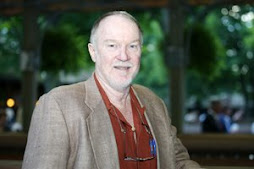Every year that passes without an American Triple Crown winner seems to amp up the criticism of the series. Trainers, pundits, owners....everyone seems to have ideas to “improve” the Triple Crown.
Why?
What is wrong with it as it stands?
The primary problem critics seem to have is that no horse has won it since Affirmed in 1978. Is that, in fact, a problem? Or is it an opportunity?
As racing's popularity has declined many within the sport seem to have fixated on a Triple Crown winner as an anodyne for the sport's problems. Why? How is a Triple Crown winner supposed to solve our problems? Yes, a triple hero (or heroine) would probably draw more television viewers to their subsequent performances for the remainder of their racing career. That period would likely extend, at most, another four months until that year's Breeders' Cup.
Any male winner (except possibly a gelding) of a Triple Crown would almost certainly retire at the end of their three-year-old season. Any female winner, well what else could she possibly accomplish by staying in training?
The racing world appears to believe (or perhaps just hope) a Triple Crown winner would serve the same function for racing that Tiger Woods serves for golf, Kobe Bryant or Lebron James for basketball, or Peyton Manning for football. Superstars sell tickets. But Woods, Bryant, James, and Manning can sell tickets (as well as shoes, cars, and soft drinks) largely because they have been superstars for many years. That simply is not going to happen with racehorses...except in extraordinarily rare cases like Yeats's four consecutive Ascot Gold Cups.
So, it seems probable that a Triple Crown winner could provide racing with a temporary publicity boost, but then what? Have the caretakers of the sport (such as they are) shown any marked ability to leverage the obvious assets we already have? How many times have the powers that be ignored or perverted the ideas of daring thinkers like Fred Pope? Would actually having a Triple Crown winner be a better marketing opportunity than the annual
possibility and the obvious difficulty of the achievement are now. Racing has an opportunity to leverage those aspects every year, but they do not do so effectively.
So, if the value of a publicity boost seems to be overvalued, are their other valid reasons for supporting either of the two changes in the Triple Crown put forward most frequently: 1) increasing the intervals between the three races; or 2) reducing the distance of the Belmont Stakes.
America's Triple Crown has been crammed into a five-week interval in May and June for about 70 years. From 1919, when Sir Barton completed the first sweep of the Triple Crown until 1978, when Affirmed became the 11th Triple Crown winner, that was not a problem. Thousands of good, sound horses raced three times—or often more—within a five-week period, regardless of whether they were running in classics or not.
Not long after Affirmed retired, however, American training methods changed. Emphasis shifted to spacing races further apart and running the best horses only in the best races instead of allowance preps. Allowance races are MUCH tougher nowadays than they were 30 years ago as the average ability of the breed has improved. Trainers are MUCH more protective of their winning percentages since owners now pay closer attention to those statistics in choosing trainers.
There is no doubt at all that changes in training methods have made winning the Triple Crown more difficult. Against the same group 30 years ago, Mine That Bird might well have won the Triple Crown (if you take Rachel Alexandra out of the mix) since Dunkirk and Summer Bird would almost certainly have run in the Preakness as well.
I simply cannot agree with those who would shorten the Belmont. That argument is based mostly on fashion and a misunderstanding of genetics. Just because 1 ½ mile races are currently out of fashion does not mean they are not valid and valuable exercises for racing. The sport already suffers greatly from way too many races that look just alike and cover the same narrow, boring range of distances, so why get rid of something that is different and thus more interesting? Makes no sense.
Trainers in particular argue that the modern American racehorse is not bred to run 1 ½ miles. Truth is, any horse can run 1 ½ miles, it's just a question of how fast. And, in terms of genetics, even sprinters can (and not infrequently do) sire 1 ½ mile horses. It's all about probability, and there are still stamina genes in the Thoroughbred genotype. A certain—though admittedly diminished—percentage of the breed will always be able to carry their speed further than others. Why should we be averse to identifying the best of those horses?
So, yes, if you want to make the Triple Crown easier to win, spread the races out over the calendar, yes, even shorten the Belmont.....if you want to make it easier to win.
But why on earth would you want to do that?

